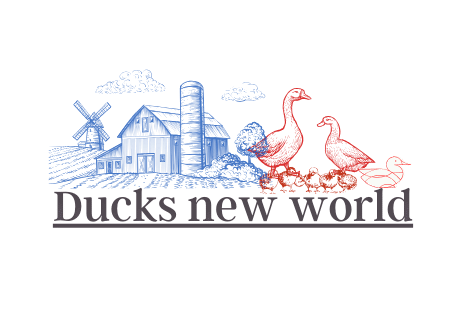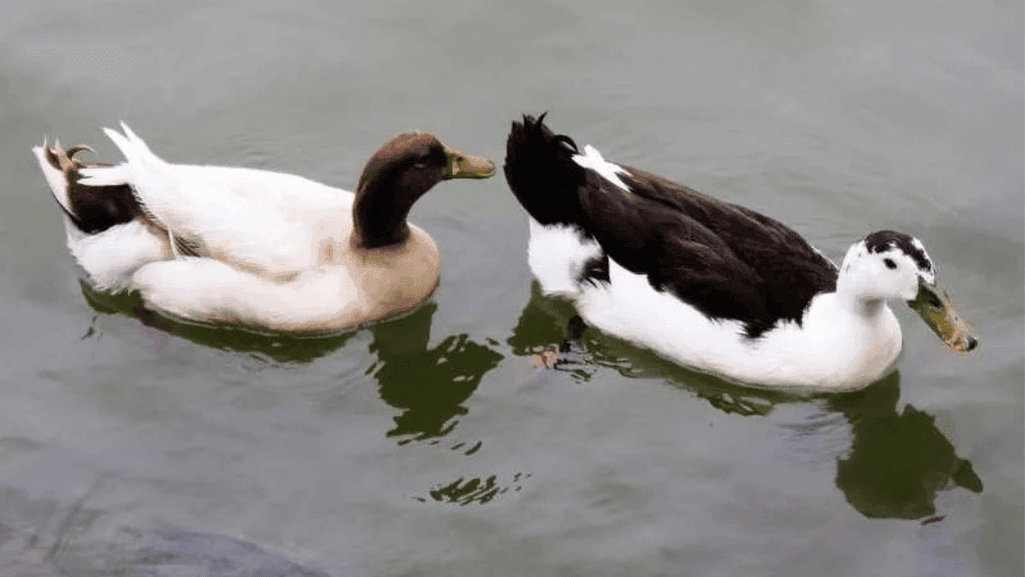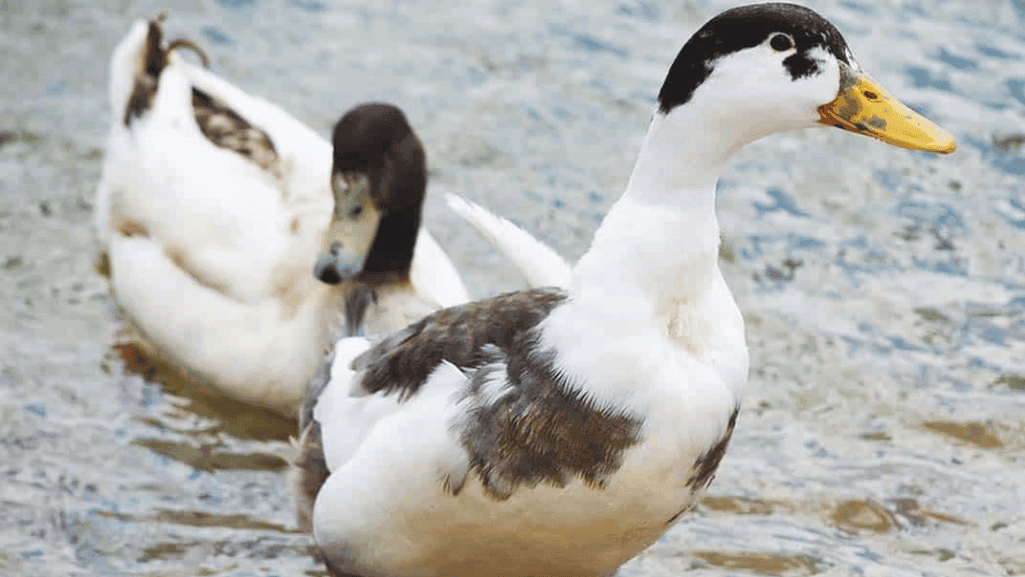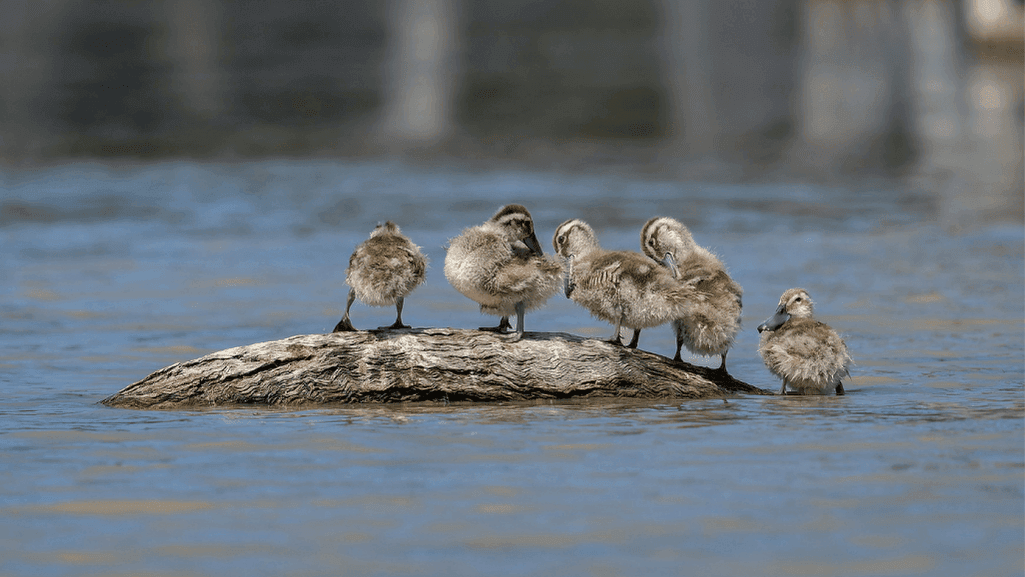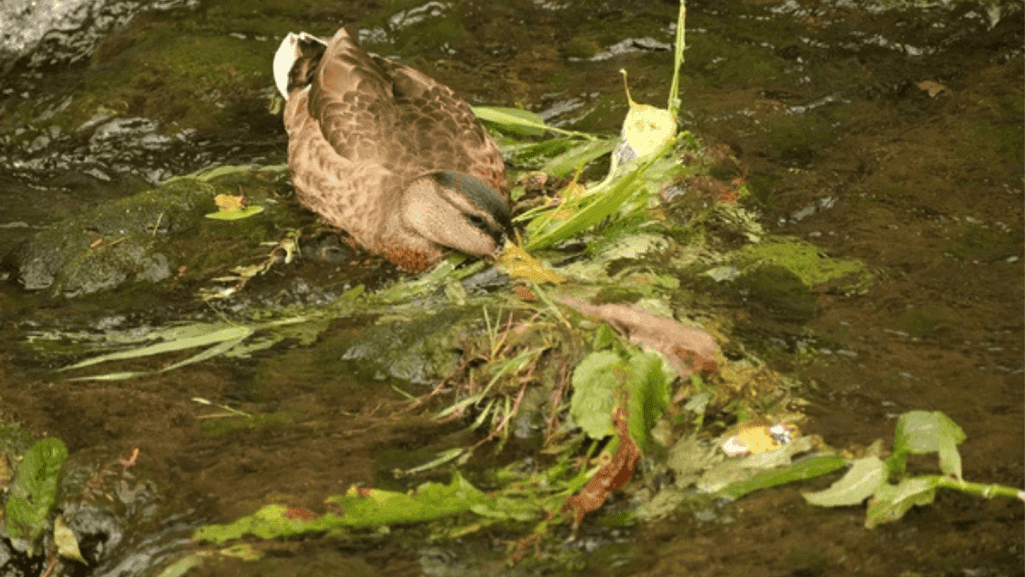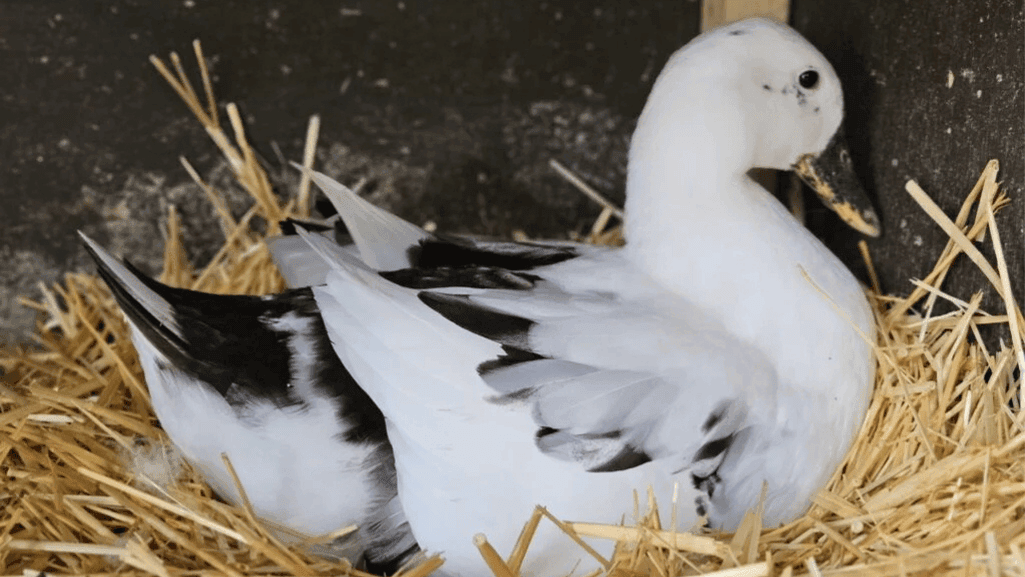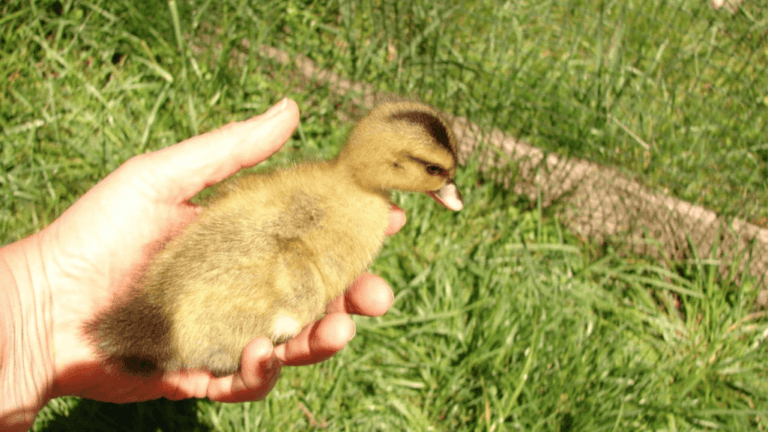Black and white ducks are a stunning sight among waterfowl. Their unique color patterns and characteristics make them fascinating. This guide explores their features, habitats, how they eat, reproduce, and their conservation status.
Black and white ducks include many species, like mallards and domestic varieties. In places like Novato, Marin, and the Bay Area, nearly 20 duck species appear in winter. They start coming from the north in August, with more in September and October.
Some ducks arrive later, into November and December. They leave again between March and early May.
Mallards are special because they are the only common baby ducks here, all year. They can walk well on land because of their feet. Males have dark green heads, yellow bills, and gray bodies. Females and young ones have brown feathers and orange-and-black bills.
Key Takeaways
- Black and white ducks are a unique variant among waterfowl species, captivating observers with their monochromatic color patterns.
- Nearly 20 species of ducks can be found in regions like Novato, Marin, and the Bay Area during winter months.
- Mallards are the only abundant baby ducks in the region, present year-round in large numbers.
- Dabbling ducks, like mallards, are capable of waddling comfortably on land due to the position of their feet.
- Male mallards have distinctive features such as iridescent-green heads, yellow bills, and gray bodies, while females and juveniles are mottled brown.
Introduction to Black and White Ducks
Black and white ducks are fascinating birds known for their striking color. They catch the eye of bird lovers and casual watchers. We’ll look at what makes a duck black and white and some common species.
What Defines a Black and White Duck?
Black and white ducks stand out because of their color. They have black and white feathers in different patterns. This creates a striking contrast.
Not all have only black and white. Some, like the Bufflehead, have other colors too. But, they’re mostly black and white.
Common Species of Black and White Ducks
Many ducks are black and white. Some well-known ones are:
- Mallard: The male Mallard is famous. It has a green head, white neck ring, and black and white feathers.
- Bufflehead: This small duck has a white patch on its head. It contrasts with its black back and wings.
- Magpie Duck: A domestic duck, it looks like a magpie with its black and white feathers.
- Welsh Harlequin: Another domestic duck, it has black, white, and reddish-brown feathers.
Black and white ducks live in many places. Some, like the Bufflehead, are found only in certain areas. Others, like the Mallard, are everywhere. Domestic breeds, like the Magpie Duck and Welsh Harlequin, are kept by duck fans.
“The black and white coloration of these ducks serves as an excellent example of the incredible diversity found in the world of waterfowl.”
Knowing how to identify black and white ducks is key. By learning about their feathers, sizes, and shapes, you can spot them easily.
Characteristics of Black and White Ducks
Black and white ducks have amazing color variations and patterns. They range from the American Black Duck’s striking contrast to the Hooded Merganser’s unique markings. These birds are a treat for anyone who loves nature.
Unique Color Patterns
The duck plumage of black and white ducks is truly remarkable. The American Black Duck has a dark brown body with a pale brown head and yellow bill in males. Females have a similar look but with duller olive bills.
In flight, males show off white underwings, and females have dark bluish-purple secondaries bordered by black. The Hooded Merganser has a black crest and a special courtship display. The Ring-necked Duck has a faint brown ring around its neck, visible up close. The Muscovy Duck, from Mexico, Central, and South America, also has unique colors and can be found in the U.S.
Size and Weight Variations
Black and white ducks come in different duck sizes and weights. The American Black Duck is about the same size as the Mallard and a bit larger than the Gadwall. The Bufflehead and Hooded Merganser are smaller.
Size and weight often match their habitats and how they eat. Larger ducks, like the American Black Duck, are good at foraging in shallow water and fields. Smaller ducks, like the Bufflehead, dive for small fish and insects.
“The diversity of black and white ducks is a testament to nature’s incredible ability to adapt and thrive in various environments.”
From the bold patterns of the Hooded Merganser to the subtle elegance of the American Black Duck, these birds are captivating. They inspire those who love nature. As we work to protect their homes, we’ll get to enjoy their beauty for many years.
Habitat and Distribution
Black and white ducks live in many places across North America and beyond. They love different duck habitats. These include marshes, lakes, rivers, and coastal areas.
The American black duck breeds in wetlands from Canada to the U.S. It’s not fully migratory, with many staying in the east-central U.S. during winter. The mallard, known for its black and white feathers, lives in many places. It’s found in the Americas, Eurasia, and North Africa.
Preferred Habitats of Black and White Ducks
Black and white ducks prefer wetlands. They need places with food, shelter, and places to nest. Their favorite spots are:
- Marshes and swamps
- Shallow lakes and ponds
- Slow-moving rivers and streams
- Coastal bays and estuaries
Different bantam duck breeds also love these places. Their small size helps them move through thick vegetation and shallow waters.
Geographic Range and Migration Patterns
Where black and white ducks live varies by species. Some, like the American black duck, stay in eastern North America. Others, like the mallard, are found worldwide. Many of these ducks migrate to warmer places for the winter.
The mallard has been introduced to various countries including New Zealand, Australia, Peru, Brazil, Uruguay, Argentina, Chile, Colombia, the Falkland Islands, and South Africa.
Knowing where black and white ducks live and migrate is key. It helps us protect them and their homes.
Feeding Habits and Diet
Black and white ducks eat a wide range of foods. They munch on aquatic plants, insects, mollusks, and small fish. They even eat over 25 types of aquatic plants, like wild rice and coontail.
The food they eat changes based on their species and where they live. Mallards, for example, eat food from the water’s surface. They go for seeds, insects, and small crustaceans. On the other hand, diving ducks like the Tufted Duck dive deep to find mollusks, plants, and fish.
Feeding Techniques
Black and white ducks have different ways to find food. They use:
- Dabbling: They lean forward, dipping their heads and necks to get plants and invertebrates from just under the surface.
- Up-ending: They stand up straight, reaching deeper into the water for food.
- Diving: Some ducks, like the Tufted Duck, dive all the way to the bottom of lakes and rivers to eat.
To help these ducks, we work on keeping their habitats good. We plant millet and native plants like wild rice. These plants attract ducks and help the ecosystem.
Reproduction and Nesting
Black and white ducks have interesting ways of reproducing, from their fancy mating rituals to their special nesting habits. These birds put a lot of effort into raising their young. Their breeding season is a thrilling sight in the wild.
Mating Rituals
Male black and white ducks show off in amazing courtship displays to find mates. They bob their heads, flap their wings, and make sounds. For example, black-bellied whistling ducks form strong pair bonds early and start breeding right away.
These pair bonds help them nest successfully, with a success rate of about 45 percent. This is higher than many other ducks.
Nesting Preferences
Black and white ducks have different nesting preferences. American black ducks like freshwater wetlands for breeding. The female picks a hidden spot to lay her eggs, which number from 6 to 14.
She incubates the eggs for 23-33 days, while the male guards the territory. Fulvous whistling ducks, by contrast, lay about 12 eggs. Both parents help with incubation.
Interestingly, fulvous whistling ducks don’t add down to their nest or cover their eggs when they leave to eat. This is unlike many other ducks.
The clutch size of black and white ducks varies. American black ducks usually lay 9 to 10 eggs, incubating for about 27 days. The female and her brood stay together for 6-7 weeks after hatching.
Cayuga ducks, a domestic breed, lay many eggs each year. This makes them great for duck farming and decoration, as shown in this guide.
Learning about black and white ducks’ reproduction and nesting helps us appreciate their amazing adaptations. These adaptations help them survive and thrive in their natural habitats.
Conservation Status and Threats
Black and white duck species face different challenges. Some populations are stable, while others decline. The Mallard, for example, is widely distributed and adaptable, making it a successful game bird.
Mallards can fly long distances, up to 800 miles in one night. Conservation efforts, like the Conservation Reserve Program, help their populations. Yet, they face threats from habitat loss and pollution.
Current Population Trends
While Mallard populations are stable, other species struggle. The American Black Duck has seen an 84 percent decline from 1966 to 2014. Stricter hunting rules have helped, but hybridization with Mallards is a major issue.
In Florida, about 7 to 12 percent of Mottled Ducks are hybrids with Mallards. This threatens their genetic purity.
Major Threats to Black and White Duck Species
Habitat loss is a big threat to these ducks. Coastal areas are being developed, polluting habitats. The Atlantic Coast Joint Venture works to protect these areas.
Hybridization with Mallards is another threat. Mallards can breed with other ducks, causing genetic problems. Conservation efforts aim to protect habitats and monitor populations to save these waterfowl.

